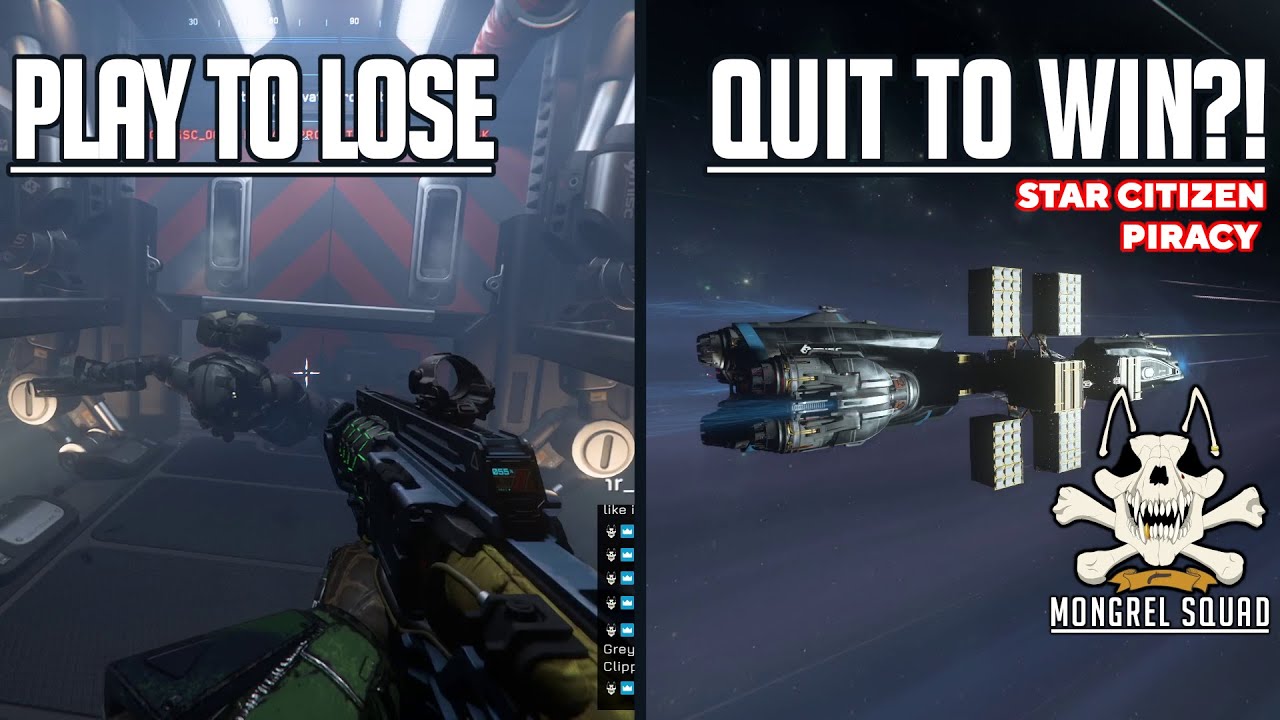The video showcases a Star Citizen piracy session where a team tactically intercepts cargo ships along popular routes, highlighting the mechanics of disabling, boarding, and salvaging vessels while facing varying levels of resistance from pilots. It also critiques the game’s current design, noting how the ease of quitting or self-destructing undermines combat engagement and risks, calling for improved mechanics to foster fairer and more meaningful piracy gameplay.
The video “Play to Lose. Quit to Win — Star Citizen Piracy 4.3” chronicles a piracy session in Star Citizen along popular quantum travel lines, focusing on intercepting and salvaging cargo ships. The team initially targets mining vessels like the Prospector and Golem but finds no valuable loot and lets them go. After a period of inactivity, they relocate to the Terra Gate to Pyrogate route, a known path for hauling cargo contracts, where they successfully snare several whole sea runners carrying low-value bulk goods. The pirates use snares and dampeners to disable targets, often forcing pilots to abandon ship or self-destruct, allowing for easier salvage operations.
Throughout the session, the team engages in close-quarters combat inside the ships, clearing rooms and chasing down pilots who attempt to evade capture by moving to different sections, including habitation areas. They encounter various ship types like the Drake and Graycat, some pilots wearing armor and armed, putting up resistance before being subdued. Despite some pilots fighting back, many choose to quit or self-destruct, minimizing their losses but forfeiting any chance to reclaim their cargo. The pirates emphasize respect for those who put up a fight rather than those who simply quit and complain afterward.
The gameplay highlights the mechanics of piracy and salvage in Star Citizen, showing how even cargo with minimal value can be worthwhile due to salvage gameplay. The team demonstrates tactical coordination, such as clearing ships from rear to front and watching for ambushes. The video also shows the use of in-game tools like voice calls, dampeners, and flares to manage engagements and defend against counterattacks. Salvage operations continue smoothly as the pirates process multiple targets, including some that return in different ships to try again, only to be intercepted once more.
However, the video critiques the game design, pointing out that the current system discourages haulers from engaging in combat or defending their cargo. Since stolen contracted cargo sells for only a fraction of its value and quitting the mission or server results in no significant penalty, many players opt to avoid risk by fleeing or abandoning their ships. This creates a gameplay imbalance where pirates can easily exploit the system, and honest players who try to fight are often punished. The video argues that this dynamic undermines the intended risk-reward aspect of piracy in Star Citizen.
In conclusion, the video calls on Cloud Imperium Games (CIG) to improve the game mechanics to better reward players who actively engage in the game’s challenges rather than those who exploit loopholes to avoid consequences. It stresses the importance of designing systems that encourage meaningful interactions, risk-taking, and fair play. The piracy session serves as both an entertaining showcase of in-game tactics and a thoughtful critique of the current state of Star Citizen’s piracy and cargo hauling gameplay.
